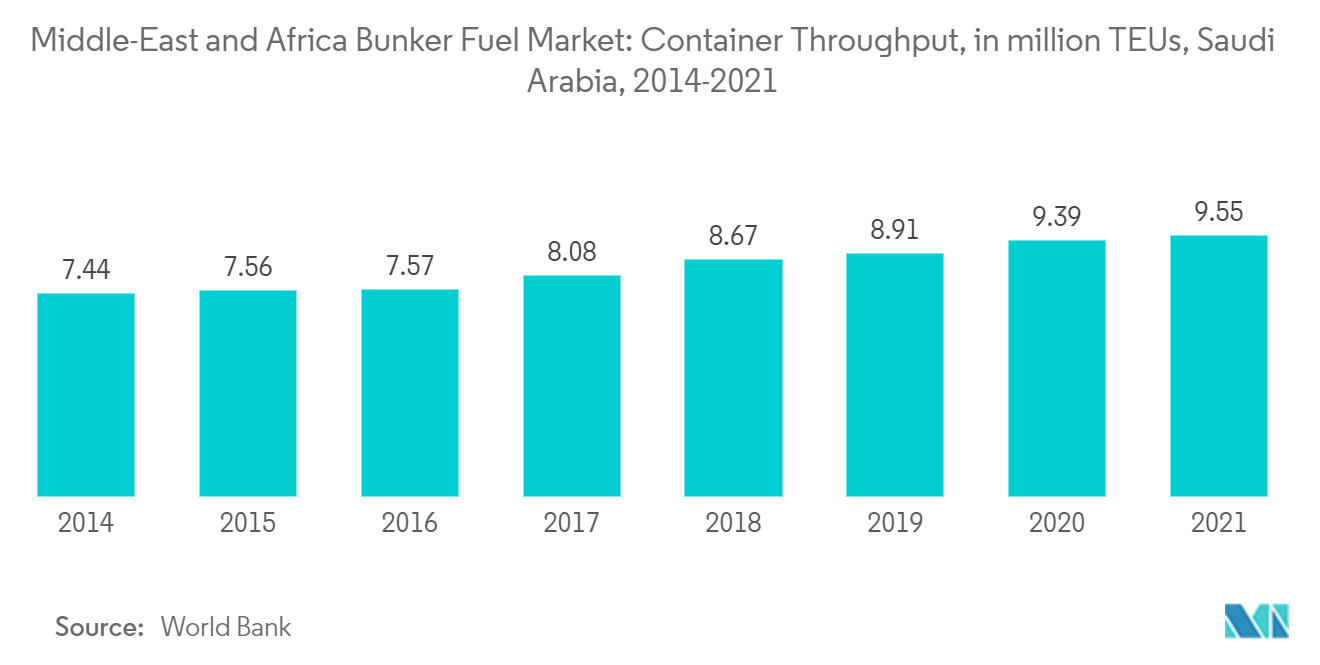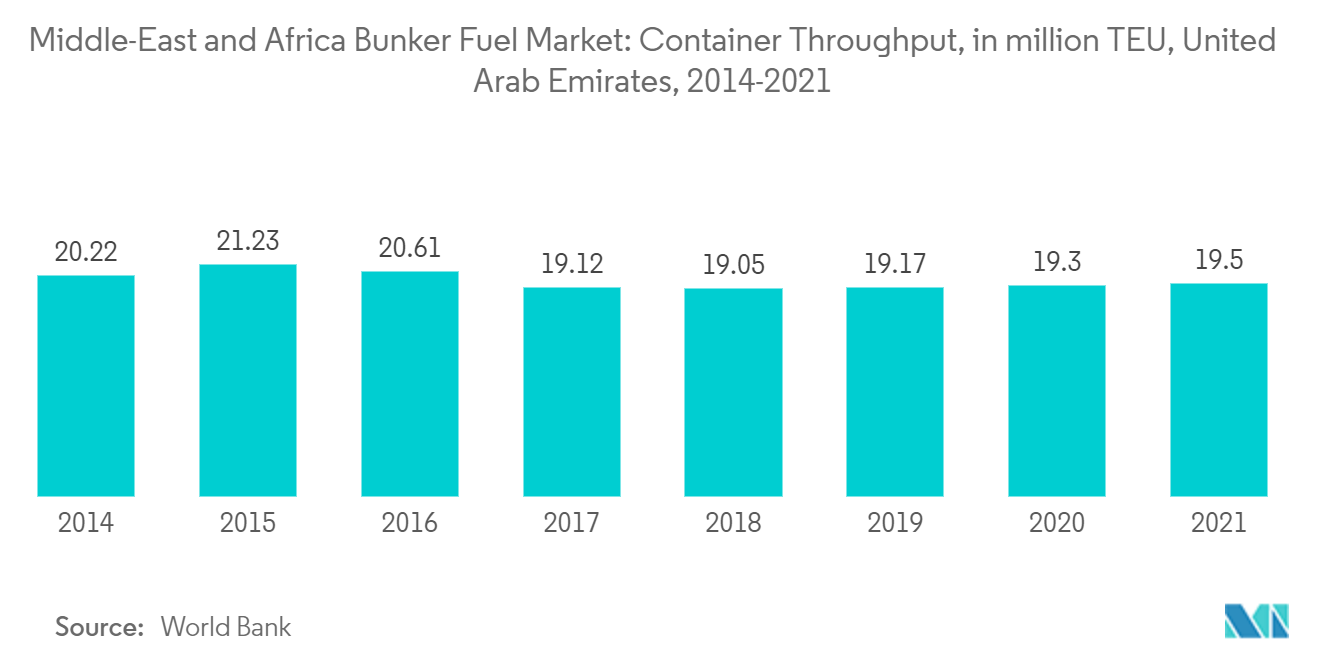Market Trends of Middle-East and Africa Bunker Fuel Industry
VLSFO to Witness Significant Growth
- Marine fuel containing less than 0.5% sulfur is generally termed "very low sulfur fuel oil." From January 1, 2020, HSFO could only be used on ships with scrubbers installed to reduce emissions, which was expected to drive the demand for VLSFO.
- Most of the high-sulfur fuel oil (HSFO) bunker fuel market is expected to be shortly replaced by low-sulfur alternatives. Most of the VLSFO available on the market is blended from residual and distillate components, which are blended with various cutters of varying sulfur and viscosity to create an on-spec product.
- The demand for VLSFO slightly declined in early 2020 due to global supply chain disruptions, a decrease in demand for general goods and products, lockdown implementation in most countries, and a global economic slowdown.
- During 2021, with 9.55 million container throughput, Saudi Arabia witnessed a 5% increase as compared to 2021. The increase in throughput was due to the development of the King Abdullah Port of the Red Sea.
- The demand for VLSFO is likely to witness significant growth during the forecast period.

The United Arab Emirates to Dominate the Market
- The United Arab Emirates is one of the major oil producers and exporters in the region. In 2018, the state-owned oil company ADNOC announced that the country planned to increase its oil production capacity to 4 million barrels per day by the end of 2020 and 5 million bpd by 2030 after new oil and gas findings.
- With the expected increase in oil and gas production, trading activities are expected to further increase between the United Arab Emirates and the rest of the world. Several other goods, such as food items and manufactured goods, get traded in the country, for which seaports act as a gateway that enables trade across the region and beyond.
- In 2021, the container throughput was around 19.0 million TEU, which decreased by 0.7 million compared to 2020. The decrease in shipping container volume was due to the challenging macro-environment, the loss of lower-margin cargo, and softer volumes in the UAE shipping market.
- There are nearly 13 ports and terminals in the United Arab Emirates that have the infrastructure and facilities to supply marine fuels to the vessels operating in the region. Jebel Ali Port is the largest port in the United Arab Emirates and the Middle East region, with a container handling capacity of 19.3 million TEU.
- Fujairah Port, the second-largest bunkering port globally, is the only multi-purpose port on the eastern seaboard of the United Arab Emirates. Apart from the conventional marine fuel supply facility, the port authority plans to introduce a ship-to-ship LNG transfer facility, which is expected to support IMO regulation towards low sulfur content fuels.
- In May 2022, the Maritime and Port Authority of Singapore (MPA) declared that it had established that the contaminated bunker fuel had originated from the port of Khor Fakkan in the UAE. Such incidents are expected to severely jeopardize client confidence in bunker fuel originating from Khor Fakkan and the UAE, which is expected to restrain the growth of the market during the forecast period.


